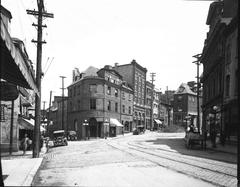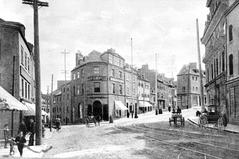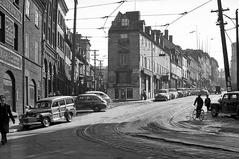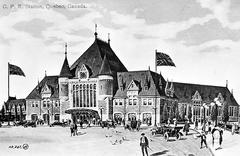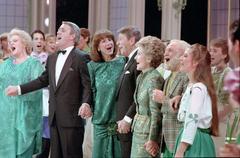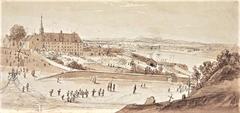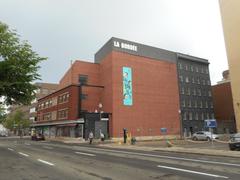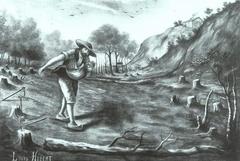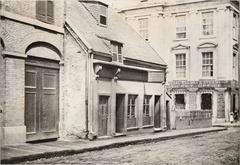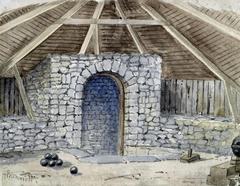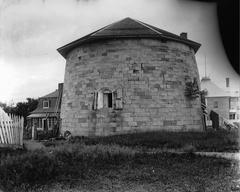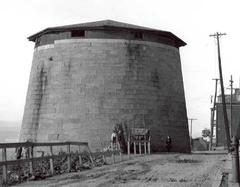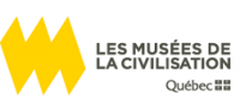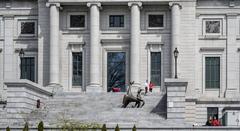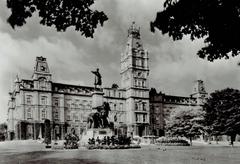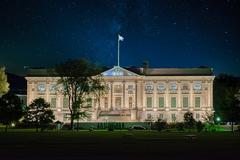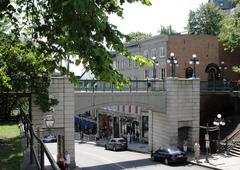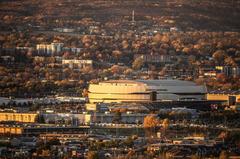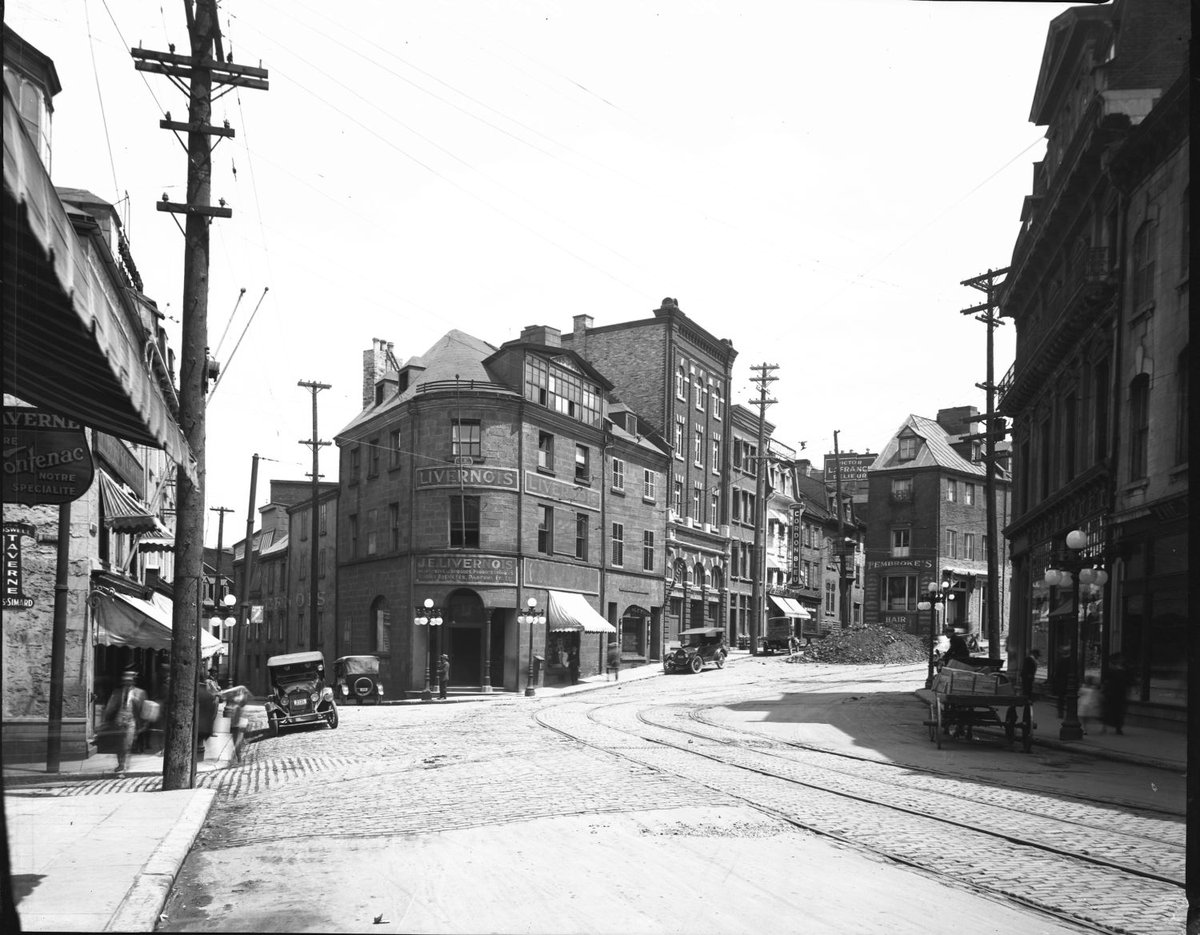
Maison Larchevêque-Lelièvre: Visiting Hours, Tickets, and Guide to Quebec City’s Historical Sites
Date: 14/06/2025
Introduction
Maison Larchevêque-Lelièvre is a distinguished historic house nestled in the heart of Old Québec, a district recognized for its UNESCO World Heritage status and remarkable preservation of colonial architecture. Dating back to 1725, it stands as one of the city’s oldest surviving examples of French colonial domestic architecture. Visitors are drawn to its robust stone façade, period features, and the stories it tells about Québec City’s evolution from a fortified colonial outpost to a vibrant cultural metropolis. While the interior is not open to the public, the building’s exterior and its setting amid key attractions offer a rewarding experience for anyone interested in history, architecture, or urban heritage (Ville de Québec; Québec City French Heritage).
This comprehensive guide provides essential information for planning your visit, including historical context, architectural highlights, practical visitor details, and tips for exploring Maison Larchevêque-Lelièvre and surrounding sites in Old Québec.
Table of Contents
- Historical Background and Significance
- Architectural Highlights
- Visiting Information
- Visitor Experience
- FAQs
- Plan Your Visit
- References
Historical Background and Significance
Maison Larchevêque-Lelièvre is located at 31 and 33 rue Garneau and 50 and 54 côte de la Fabrique, in the La Cité district of Québec City (Ville de Québec). Commissioned by Marie-Joseph Larchevêque and her husband, Jean-Baptiste Lelièvre dit Duval—a surgeon—the house was completed in 1727, making it a rare survivor from the early 18th century (Toponymie Québec).
The building has witnessed significant historical events, including the British Conquest and the city’s transformation through the centuries. Its adaptability is evident in the addition of a third floor in 1816 and the elevation of an adjacent store in 1826. Maison Larchevêque-Lelièvre was classified as a historic monument in 1963 and reaffirmed as such in 2003, cementing its status as a cornerstone of Québec’s urban heritage.
Set within the only walled city north of Mexico, the house’s location underscores its significance. It is an architectural and cultural witness to the city’s French roots, British influences, and enduring Francophone identity (UNESCO World Heritage; Québec City Official Tourism).
Architectural Highlights
Maison Larchevêque-Lelièvre exemplifies French colonial urban domestic architecture, characterized by:
- Steeply pitched, mansard roof: Maximizes attic space and sheds snow efficiently.
- Thick masonry walls: Built from locally quarried limestone, providing insulation and fire resistance.
- Symmetrical façade and small, multi-paned windows: Reflect classical French design adapted to the North American climate.
- Corner location: Enhances its prominence and integration with the historic streetscape.
Adaptations over time, including the addition of stories and modernization of windows and doors, demonstrate the building’s resilience and the changing needs of its occupants. Careful restoration has preserved original elements, making the house a valuable resource for understanding Québec’s material culture (Quebec City Official Tourism; Ville de Québec).
Visiting Information
Location and Accessibility
Maison Larchevêque-Lelièvre is centrally located in Old Québec, within easy walking distance of key attractions such as Place d’Armes, Notre-Dame de Québec Basilica-Cathedral, and Rue Saint-Jean. The area is pedestrian-friendly, though cobblestone streets may present challenges for those with mobility impairments.
Address:
31 & 33 rue Garneau; 50 & 54 côte de la Fabrique, Québec City, QC
(Ville de Québec)
Public transit stops are nearby, and visitor centers offer maps and assistance. Parking is limited in Old Québec; use public transportation or park in designated lots outside the core.
Hours and Admission
- Exterior viewing: Available year-round during daylight hours.
- Interior access: Not open to the public.
- Admission: No fee to view the exterior.
- Guided walking tours: Typically operate from 9:00 AM to 6:00 PM; prices range from CAD 15–30 per person. Book in advance through reputable providers (Québec Cité Walking Tours).
Guided Tours
Maison Larchevêque-Lelièvre is featured on many heritage walking tours, which provide in-depth commentary on its history, architecture, and role within Old Québec. Tours are available in both French and English and often include nearby landmarks such as Place Royale, Petit-Champlain, and the Citadelle (Québec City Official Guide; Dream Big Travel Far Blog).
Travel Tips and Nearby Attractions
- Wear comfortable shoes: Cobblestones and uneven surfaces are common.
- Combine visits: Explore Maison Larchevêque-Lelièvre alongside Place Royale, Notre-Dame de Québec, and Rue Saint-Jean.
- Check schedules: Hours for nearby sites and tours vary seasonally.
- Local amenities: Cafés, shops, and restaurants are abundant in the area.
Visitor Experience
Photography and Interpretation
While the interior is closed, the exterior is particularly photogenic, especially in early morning or late afternoon light. Look for interpretive panels nearby or consult the Ville de Québec’s heritage portal for more historical details.
Etiquette and Preservation
Respect the building’s heritage status by not touching or leaning on the stonework. Photography from public spaces is permitted for personal use. Avoid blocking pathways or disturbing other visitors.
FAQs
Q: Can I enter the interior of Maison Larchevêque-Lelièvre?
A: No, the interior is not open to the public. Enjoy the exterior from public spaces.
Q: Is there a fee to visit Maison Larchevêque-Lelièvre?
A: No, there is no fee to view the exterior. Guided walking tours that include the house may charge a fee.
Q: Are guided tours available?
A: Yes, heritage walking tours often include Maison Larchevêque-Lelièvre as part of their route (Québec Cité Walking Tours).
Q: Is the site accessible for people with mobility challenges?
A: The surrounding area is generally accessible, but cobblestone streets may be difficult for some visitors.
Q: What are nearby attractions?
A: Place Royale, Notre-Dame de Québec Basilica-Cathedral, Musée de l’Amérique francophone, and Rue Saint-Jean.
Q: Can I take photographs?
A: Yes, photography of the exterior is allowed for personal use.
Plan Your Visit
- Best time to visit: Spring to fall for pleasant weather and vibrant street life; winter for a picturesque snowy scene (Québec Cité Seasons).
- Languages: French is primary, but English is widely spoken in tourist areas.
- Enhance your experience:
- Join a heritage walking tour.
- Download the Audiala app for curated audio guides and interactive maps.
- Visit the official Québec City tourism website for up-to-date information on hours and events.
- Explore related posts on Old Quebec Landmarks and French Colonial Architecture in Quebec.
References
- Ville de Québec
- Toponymie Québec
- UNESCO World Heritage
- Québec City Official Tourism
- Québec City French Heritage
- Québec Cité Walking Tours
- Dream Big Travel Far Blog
- Audiala app
Maison Larchevêque-Lelièvre is a remarkable testament to Québec City’s enduring architectural and cultural legacy. By planning your visit with the resources above, you’ll gain a deeper appreciation for this historic gem and the vibrant history of Old Québec.
